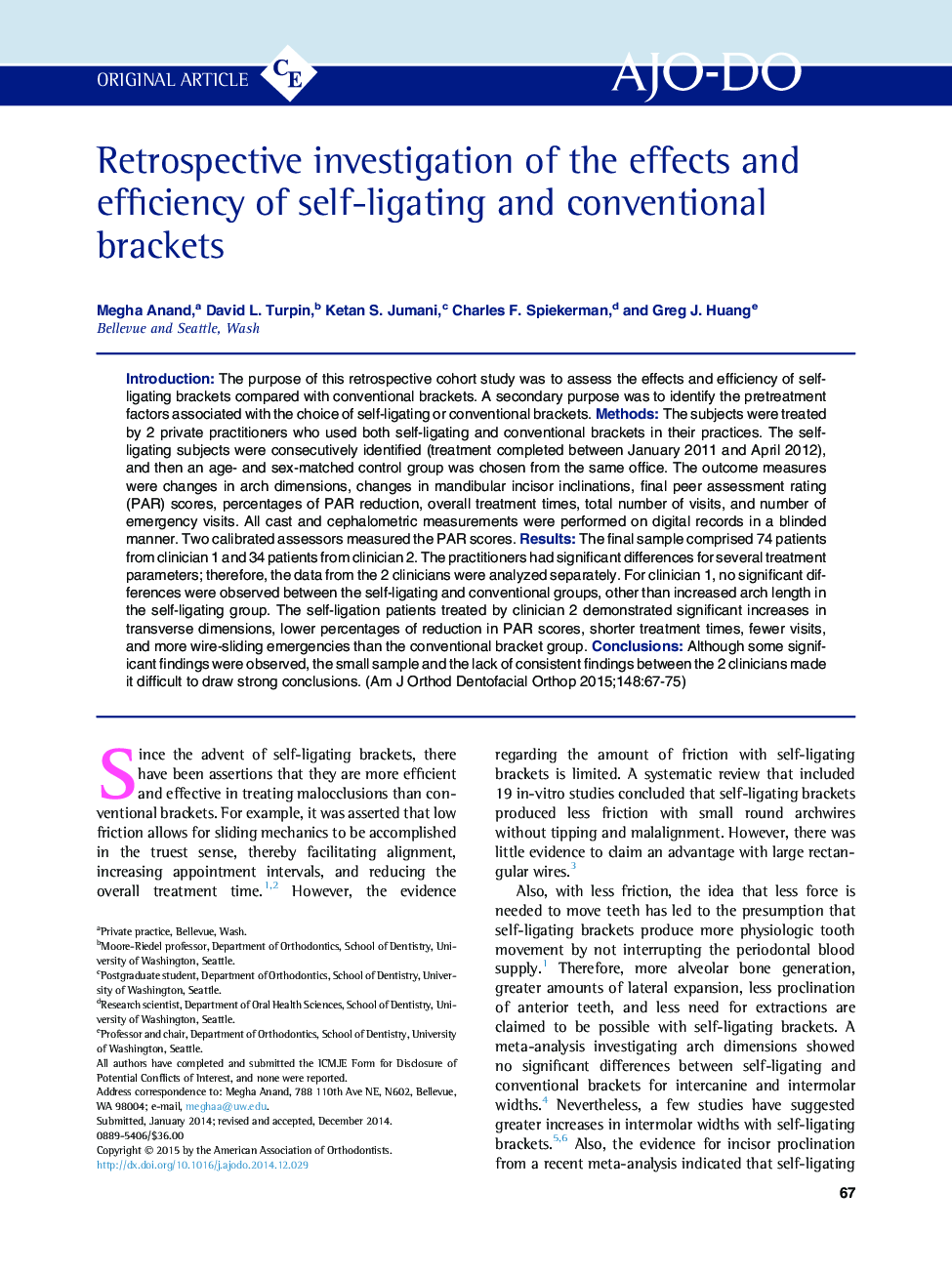| Article ID | Journal | Published Year | Pages | File Type |
|---|---|---|---|---|
| 3115336 | American Journal of Orthodontics and Dentofacial Orthopedics | 2015 | 9 Pages |
•We compared self-ligating and conventional brackets retrospectively.•Parameters were arch dimension, incisor inclination, and occlusal outcome.•Measurements were made at 2 times for 2 clinicians•Bracket type did not affect the measurements or treatment efficiency.•Variations depend more on patient characteristics or treatment choices.
IntroductionThe purpose of this retrospective cohort study was to assess the effects and efficiency of self-ligating brackets compared with conventional brackets. A secondary purpose was to identify the pretreatment factors associated with the choice of self-ligating or conventional brackets.MethodsThe subjects were treated by 2 private practitioners who used both self-ligating and conventional brackets in their practices. The self-ligating subjects were consecutively identified (treatment completed between January 2011 and April 2012), and then an age- and sex-matched control group was chosen from the same office. The outcome measures were changes in arch dimensions, changes in mandibular incisor inclinations, final peer assessment rating (PAR) scores, percentages of PAR reduction, overall treatment times, total number of visits, and number of emergency visits. All cast and cephalometric measurements were performed on digital records in a blinded manner. Two calibrated assessors measured the PAR scores.ResultsThe final sample comprised 74 patients from clinician 1 and 34 patients from clinician 2. The practitioners had significant differences for several treatment parameters; therefore, the data from the 2 clinicians were analyzed separately. For clinician 1, no significant differences were observed between the self-ligating and conventional groups, other than increased arch length in the self-ligating group. The self-ligation patients treated by clinician 2 demonstrated significant increases in transverse dimensions, lower percentages of reduction in PAR scores, shorter treatment times, fewer visits, and more wire-sliding emergencies than the conventional bracket group.ConclusionsAlthough some significant findings were observed, the small sample and the lack of consistent findings between the 2 clinicians made it difficult to draw strong conclusions.
Graphical abstractFigure optionsDownload full-size imageDownload high-quality image (77 K)Download as PowerPoint slide
